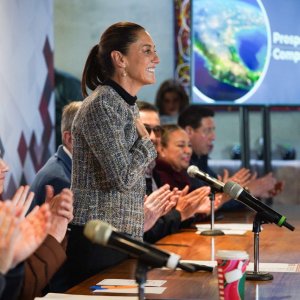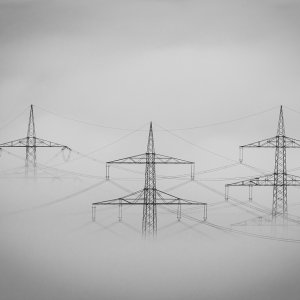
Deploying a Full-Fledged Energy Marketplace
The palpable results of the country's Energy Reform are shaping a success story that is based on competitiveness, a level playing field and innovation. According to CRE’s latest statistics, Mexico’s electricity sector boasts the active participation of 12 nonsupplying energy traders, 18 qualified suppliers and 68 qualified users. The numbers attest to both the appetite of the private sector to engage in the country’s revamped and unlocked energy industry and the bankability of clean and renewable energy as a power-producing source. Despite basic supply and last-resort supply remaining in the hands of CFE, the involvement of private players is steadily increasing across the wholesale electricity market’s value chain, as CRE’s generation permits database shows. As of December 2017, CRE had issued 969 self-supply permits, 502 generation permits, 290 permits for smallscale production, 156 cogeneration permits, 68 generation permits for in-house use, 66 import permits, 35 qualified supply permits, 31 independent power producer permits and 13 export permits. Mexico’s long-term electricity auctions have made power, energy and CELs the sector’s most prized commodities so far, yet short-term products are set to become increasingly popular as trading operations multiply and the market gains liquidity. It is likely that 2018 will see a greater number of transactions for spot market products such as day-ahead and real-time energy transactions, as well as hour-ahead transactions, as regulators bring the wholesale electricity market’s second stage to life before the end of the year. Ancillary services are also expected to be on the rise, including static loads, spinning reserves and nonspinning reserves.
BASIC SUPPLY TARIFF
Prior to the launch of Mexico’s wholesale electricity market, electricity tariffs underwent few to no variations for long periods of time, its calculation was opaque and final users’ electricity tariff was heavily subsidized for small-scale consumption. Now, CRE’s unveiling of the Basic Supply Tariff on Nov. 29, 2017 signals, with absolute transparency, the real cost of electric generation, distribution and transmission to the rest of the market. “These tariffs will be based on the monthly electricity generation cycle, while they previously were calculated based on a 1990s methodology that used a fixed power-producing mix where price was solely impacted by fuel price variations. This new attribution is historic as tariffs will be determined for the first time by an independent, autonomous regulator, contributing to the market’s development,” says Guillermo García, President Commissioner of CRE. Forerunner qualified suppliers had to design a business model absent this government-designed signal. “CFE does not work under a fixed-price scheme, it uses a formula. Power generation, distribution, transmission and metering costs that impact final consumers are sometimes misrepresented in the calculation of this formula. As you clear all these variables and get to the whole picture, you are in a position to offer a real alternative,” says Paul Sánchez, Director General of Brío Suministro.
CLEAN ENERGY CERTIFICATES
One question that needed answering was how to ensure utility-scale projects were commercially viable to the point that the produced renewable energy was guaranteed demand beyond environmentally-conscious economic players. Mexico’s energy authorities tackled the issue and designed a disruptive instrument in response: Clean Energy Certificates (CELs). Article 123 of the Electric Industry Law (LIE) stipulates that electricity market participants that are obligated to comply with CELs consumption include suppliers, qualified users and final users relying on isolated supply, and legacy interconnection contract-holders whose contract conditions include load centers that do not cover the totality of its clean energy consumption. While 2018 will require these participants to cover at least 5 percent of their energy consumption with CELs, the percentage is set to increase to 31.7 percent by 2022. “We see two key roles played by CELs. The first is already reflected in the longterm auctions for which they were conceived, helping developers gain additional remuneration and certainty to finance and complete their projects, and then a more financial side where these certificates will represent a very liquid and tradable product within the bilateral market,” says Salvador Alarcón, Founding Partner and CEO of Tradeon Energy.
TRADING PLATFORMS
To bolster Mexico’s wholesale electricity market transactions, both public agencies and private companies are heavily relying on electronic platforms, taking advantage of the benefits that IoT and cloud usage can bring in fostering Mexico’s incipient generalized energy trading practice. CRE, for instance, is applying the finishing details for its CELs trading electronic platform. “The design of CRE’s S-CEL system was developed jointly with USAID throughout the year. This platform has the potential to enhance the amount of renewable energy in Mexico’s energy mix to help meet its clean energy generation commitments. Visibility and transparency on CELs transactions — purchase, sale and ownership tracking — are key,” says García. The private sector is not far behind, drawing blueprints for what promises to take Mexico’s energy trading practices to new heights. “We are primarily focusing on OTC derivatives — forwards and swaps — and customized off-venue financial derivatives, as those are the risk-management products with the highest demand,” says Natalia García, Director General of eVOLT. “We have identified a window of opportunity to introduce precursor market-order mechanisms to create a marketorder system for transactions in infrastructure and green bonds, ETCs and physically settled derivatives with STP scheduling at CENACE.”
WHAT COMES NEXT
Mexico’s energy trading sector’s proven potential has garnered the attention of industry heavyweights such as Enel Green Power. This Italian renewable powerhouse, which saw projects awarded throughout all three editions of the long-term electricity auctions, launched its own local qualified supply subsidiary, Enel Energía México, in October 2017. Despite its slow start, energy trading’s relevance in the wholesale electricity market led to the creation of Mexico’s qualified suppliers association (AMSCA) in April 2017, where its members can raise in unison their concerns about the industry and maintain an open communication channel with Mexico’s energy authorities to gradually provide all legal and regulatory instruments that could solve the needs of basic supply and create an efficient and profitable energy marketplace. AMSCA’s associates specialized in qualified supply include BID Energy, Ektria, Energy to Market, Enel Green Power and Elek. These new developments should come as no surprise, considering the Ministry of Energy’s Energy Transition Program, that 2017’s brute electricity consumption was 305TWh, while consumption for 2018 and 2019 is expected to increase to 316 and 327TWh, respectively. The same projection stipulates 15.3 million and 18.4 million CELs will be available for purchase for 2018 and 2019, respectively.















